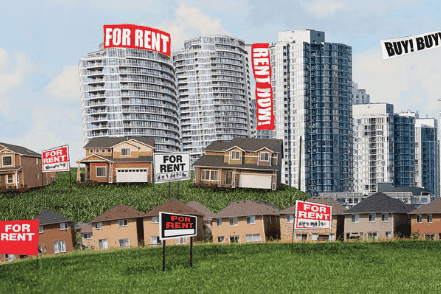
Australian Property Monitors (APM) has released its Rental Market Report for the December quarter and it is a mixed bag.
Canberra (+6.4%), Brisbane (+2.7%) and Perth (+2.6%) registered strong growth in house rents over the quarter, whereas Melbourne, Hobart and Darwin registered no growth:
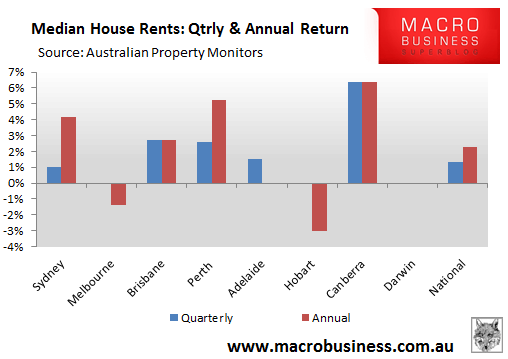
Over the year, Canberra (+6.4%), Perth (+5.3%) and Sydney (+4.2%) registered solid rental growth, whereas Hobart (-3.0%), Melbourne (-1.4%), Adelaide (+0.0%) and Darwin (+0.0%) registered negative or zero growth.
Adjusting for inflation, annual rental growth was achieved in Canberra (+3.2%), Perth (+2.1%) and Sydney (+1.0%), whereas annual falls were experienced in Hobart (-5.9%), Melbourne (-4.3%), Adelaide (-3.0%), Darwin (-3.0%) and Brisbane (-0.4%):
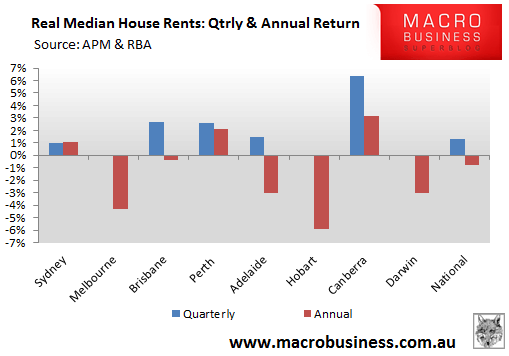
The results were stronger for units, with solid rises across the board in all cities except for Hobart and Melbourne, whose annual rental growth failed to match inflation:
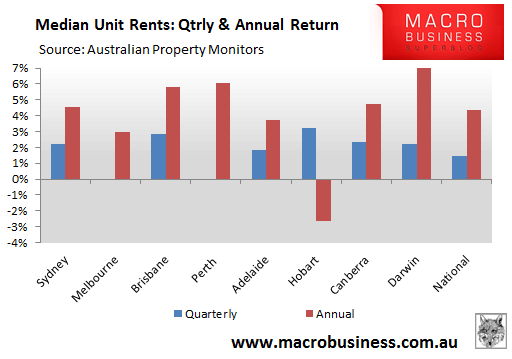
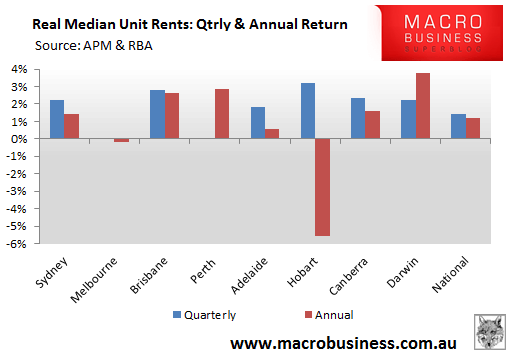
For me, the most interesting aspect about the APM rental series is the very poor rental growth that has been achieved in Melbourne over a long period of time. As shown in the below chart, median Melbourne house rents have increased by only $10 in three-and-a-half years. Melbourne rents are currently $140 (28%) below Sydney’s, $20 (5%) below Brisbane’s, and $40 (-10%) below Perth’s. Moreover, they have fallen significantly in real (inflation-adjusted) terms (see below charts).
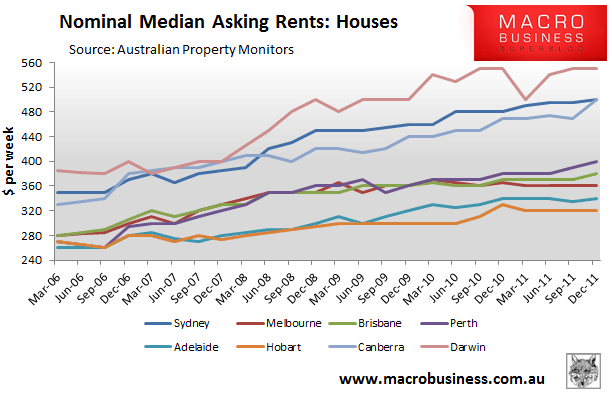
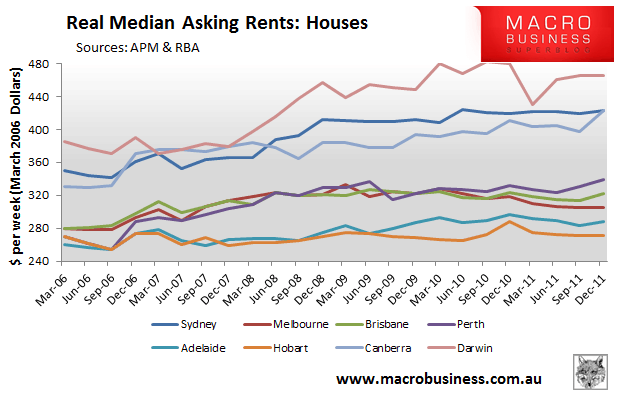
The situation is better for units, with Melbourne posting returns marginally in excess of inflation over the past three years:
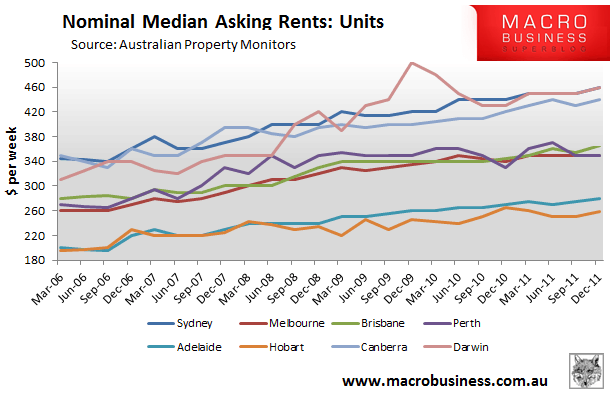
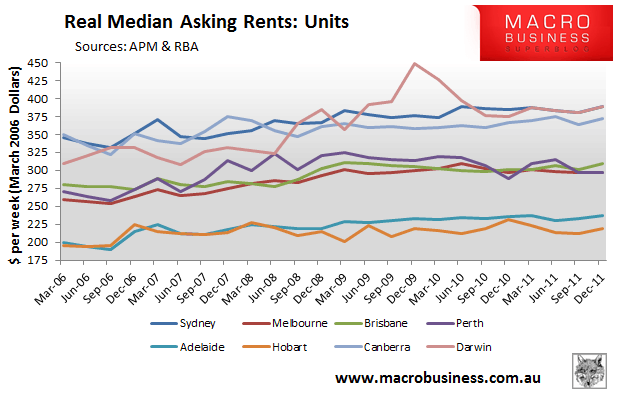
The divergence between Melbourne rental returns is even more stark when rental yields are charted. As you can see below, Melbourne gross house rental yields (currently 4.0%) are well below the other capitals, whose gross yields range between 4.5% to 5.1%. Moreover, with rents flat lining, the recent improvement in Melbourne gross yields, from 3.6% in September 2010 to 4.0% currently, has been caused entirely by falling house prices.
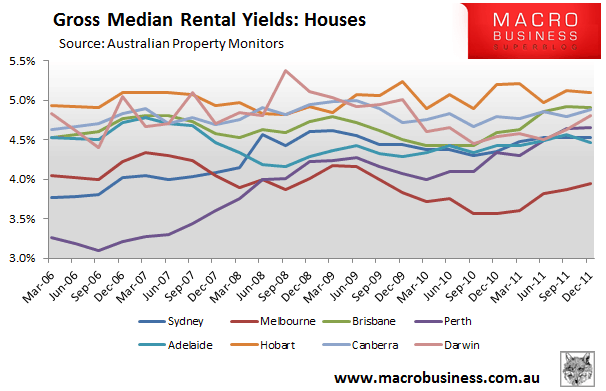
The situation is similar for unit rental yields. Although gross unit yields are higher than for houses, Melbourne’s yields once again lags the other capitals by a significant margin:
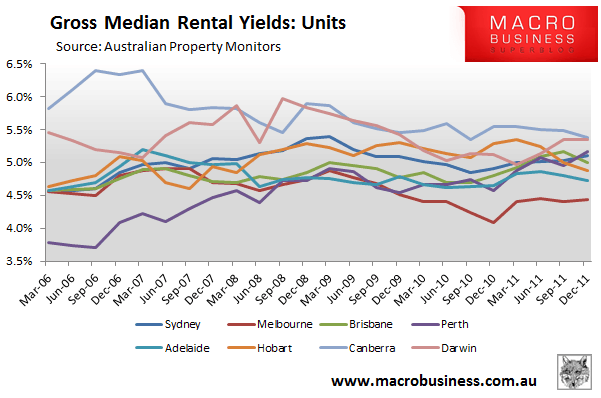
As has been mentioned many times on this blog, Melbourne has for years dominated the nation’s new home construction, and this extra supply has clearly had a dampening effect on Melbourne rents. With Melbourne vacancy rates currently running at 3.5%, and significant new housing construction still in the pipeline, expect to see Melbourne’s rental under performance continue.
unconventionaleconomist@hotmail.com

